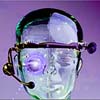| . |  |
. |
The WET model of the European Robotic Arm (ERA) was comprehensively inspected and tested at the Gagarin Cosmonaut Training Centre near Moscow last week. ESA astronaut Andre Kuipers donned a Russian Orlan spacesuit for the occasion. He spent over three hours underwater with the model of the robotic arm, which was built in 1998, but is nevertheless in perfect condition.
Impressive The impressive robotic arm is over 11 metres in length and weighs 630 kg. Once ERA reaches the International Space Station (ISS), the Russian Multipurpose Laboratory Module (MLM) will be its home base. With the help of seven joints, a variety of tools and its electronics, the astronaut's aid can move insect-like around the Russian ISS segments and will be used for a variety of tasks. ESA's ERA project manager Philippe Schoonejans said: "ERA can work with the Russian airlock, which means that astronauts will no longer have to venture outside the Space Station to install certain pieces of hardware. Using video cameras, the arm can perform inspections of the outside of the Station, it can move experiments and supplies and even serve as a crane for astronauts." Kuipers tested the Weightless Environmental Test model of ERA, known as the 'WET model'. This model was built in 1998 by a consortium of companies led by Dutch Space, from the Netherlands. Originally ERA would have been launched on the Space Shuttle in 2001, but due to circumstances its launch has been delayed. Last summer it was decided that the robotic arm would be launched in November 2007 on board a Russian Proton rocket together with MLM.
Heavy going There is work to be done before then though. Last week, in an underwater exercise lead by Kuipers, the WET model was dismantled and then reassembled. Together with Russian Dmitry Verba, Kuipers also checked the manual controls, which serve as a backup to the automated system. According to the Dutch astronaut: "the exercise was heavy going, it took a lot of patience. We had to make lots of rotational movements during the manual control of the arm; not an easy task underwater." The arm functioned well. Although Schoonejans concluded that there are some improvements to be made. Some one-handed operations had to be performed by Kuipers using two hands, or with the help of Verba, as the astronaut had no means of stabilising himself. One possible solution for this would be to use a mobile attachment mechanism. A set of spanners will also have to be modified, as they kept releasing during tightening of the bolts, wasting valuable time. Isolation material, which at times obstructed the video cameras, will also have to be better secured.
Perfection For the coming year, the Russian company Energia, as well as the European partners who built ERA, will be working to perfect the robotic arm. From mid-2006, once new procedures are ready, future ISS expedition crews will train with ERA for the first time. They will become fully familiarised with ERA before its launch in 2007. Related Links Yuri Gagarin Cosmonaut Training Centre ESA Human Spaceflight Dutch Space Andre Kuipers SpaceDaily Search SpaceDaily Subscribe To SpaceDaily Express  Moffett Field (SPX) Dec 02, 2004
Moffett Field (SPX) Dec 02, 2004Most observers of the Mars missions think the rovers are driven, like a car, but in fact they are commanded. While using a joystick or wheel to drive a rover might at first seem appealing, the 20 minute delay in transmission of each signal from Earth to Mars would make a true drive more like a very slow crawl.
|
| |||||||||||
| The content herein, unless otherwise known to be public domain, are Copyright 1995-2016 - Space Media Network. All websites are published in Australia and are solely subject to Australian law and governed by Fair Use principals for news reporting and research purposes. AFP, UPI and IANS news wire stories are copyright Agence France-Presse, United Press International and Indo-Asia News Service. ESA news reports are copyright European Space Agency. All NASA sourced material is public domain. Additional copyrights may apply in whole or part to other bona fide parties. Advertising does not imply endorsement, agreement or approval of any opinions, statements or information provided by Space Media Network on any Web page published or hosted by Space Media Network. Privacy Statement All images and articles appearing on Space Media Network have been edited or digitally altered in some way. Any requests to remove copyright material will be acted upon in a timely and appropriate manner. Any attempt to extort money from Space Media Network will be ignored and reported to Australian Law Enforcement Agencies as a potential case of financial fraud involving the use of a telephonic carriage device or postal service. |